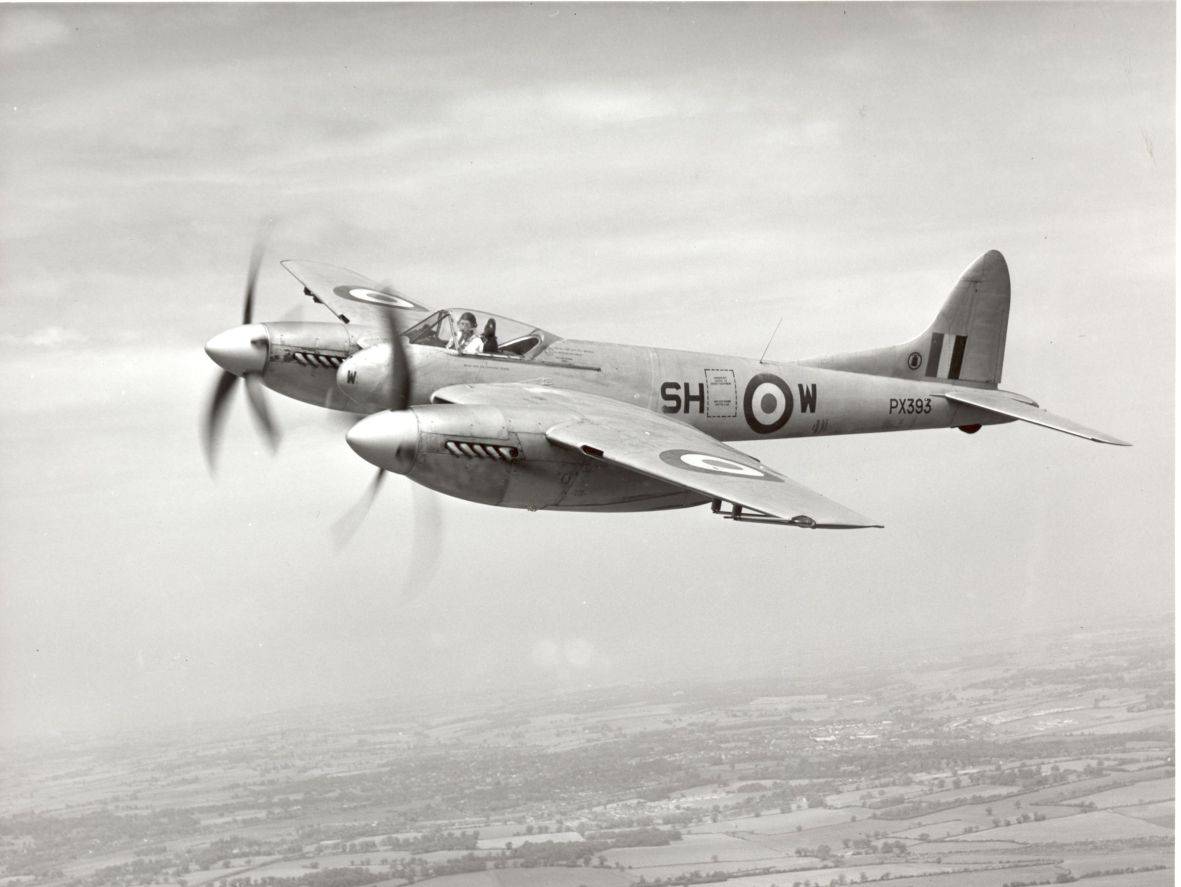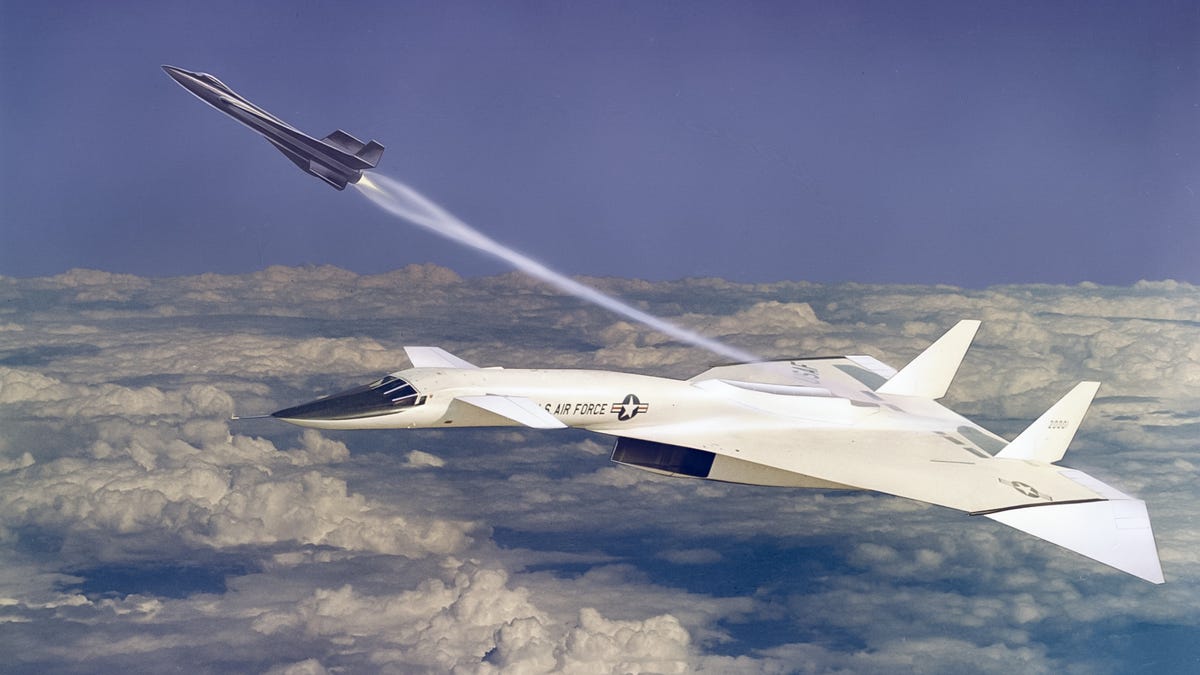Fastest Us Bomber - The North American Aviation XB-70 Valkyrie was a prototype version of the B-70 nuclear-armed deep-bore supersonic strategic bomber planned for the United States Air Force Command. Designed in the late 1950s by North American Aviation (NAA), the six-engine Valkyrie was capable of cruising thousands of miles at Mach 3+ while flying at 70,000 feet (21,000 m).
At this speed, the B-70 was expected to be virtually immune to interceptors, the only effective anti-bomber weapon at the time. The bomber would spend only a short time over a given radar site and fly out of range before the air traffic controllers could get their fighters into a suitable position to intercept. Its high speed made the aircraft difficult to see on radar screens, and its high-altitude and high-speed capabilities could not be matched by any contemporary Soviet interceptor or fighter aircraft.
Fastest Us Bomber

The advent of the first Soviet surface-to-air missiles in the late 1950s cast doubt on the B-70's near obscurity. In response, the United States Air Force (USAF) began flying its missions at low levels, where the missile radar's line of sight was limited by terrain. In this low-level penetration role, the B-70 offered little additional performance over the B-52 it was intended to replace, but was much more expensive with a shorter range. Other alternative projects were proposed, but they were limited in scope. With the introduction of intercontinental ballistic missiles (ICBMs) in the late 1950s, manned bombers were considered increasingly obsolete.
Iconic Aircraft Of The Vietnam War
The USAF eventually gave up fighting for its production, and the B-70 program was canceled in 1961. Development turned into a research program to study the effects of prolonged high-speed flight. As such, two prototype aircraft, designated the XB-70A, were built; these aircraft were used for supersonic test flights between 1964-1969. In 1966, a prototype crashed after colliding with a smaller aircraft while flying in close combat; The remaining Valkyrie bomber is at the National Museum of the United States Air Force near Dayton, Ohio.
In an offshoot of the Boeing MX-2145 manned glider project, Boeing partnered with the RAND Corporation in January 1954 to study what type of bomber would be needed to deliver the various nuclear weapons under development. At the time, nuclear weapons weighed several tons, and the need to transport enough fuel to fly that payload from the continental United States to the Soviet Union required large bombers. They also concluded that after the bombs were dropped, the aircraft would need supersonic speeds to escape the critical blast radius.
The airline industry had been studying this problem for some time. From the mid-1940s, there was interest in using nuclear-powered aircraft in the bomber role.
In a conventional jet engine, thrust is provided by heating air with jet fuel and accelerating it through a nozzle. In a nuclear engine, heat is provided by a nuclear reactor, which lasts for months instead of hours. Most designs also carried small amounts of jet fuel for use during much of the flight, such as high-speed takeoffs and runs.
Instagram Is Where All My Bomber Opinions Come From. Also, What Does The Letter Before The Numbers Mean?
Another possibility explored at this time was the use of boron-rich "zip fuel", which improves the energy density of jet fuel by 40 percent.
The United States Air Force (USAF) followed these developments closely and in 1955 issued General Operating Requirements No. 38 for a new bomber, which combined the payload and international range of the B-52 with the Convair B-58's maximum speed of Mach. 2. Cheater.
Both nuclear and conventional designs were considered. The nuclear-powered bomber was planned as the "Weapon System 125A" and was pursued alongside the jet-powered version, the "Weapon System 110A".
Boeing's design was almost identical but differed greatly in having a single vertical stabilizer and two of its engines in pods on the outer edges of the inboard wing sections.
B 52 Bomber On Way To Raf Fairford Circles Over Herefordshire
The USAF Air Research and Development Command (ARDC) requirement for the WS-110A called for a chemical-fueled bomber with a cruising speed of Mach 0.9 and a "maximum possible" flight speed of 1,000 nautical miles (1,200 mi; 1,900 km) trans and departure from the target. The requirement also called for a 50,000 lb (23,000 kg) payload and a combat radius of 4,000 nautical miles (4,600 mi; 7,400 km).
The Air Force established a similar requirement for the WS-110L Intercontinental Reconnaissance System in 1955, but it was later abandoned in 1958 due to better alternatives.
Boeing and North American Aviation submitted proposals and were awarded contracts for Phase 1 development on November 8, 1955.
Zip fuel was to be used in the afterburner to improve range by 10 to 15 percent compared to conventional fuel.
Xb 70 Vs X 15: Interesting Image Shows The Largest And The Fastest Manned Research Aircraft Ever Conceived Parked Side By Side
Both designs featured huge fuel tanks with wings that could be dropped when fuel ran out before a supersonic run to the target. The tanks also contained the outer section of the wing, which would also be deleted to produce a smaller wing suitable for supersonic speeds.
Both converted to trapezoidal wings after ejection, at the time the best performing form known. They also had recessed cabs to maintain the highest possible finesse ratio despite their effect on visibility.
The two designs had takeoff weights of approximately 750,000 pounds (340,000 kg) with heavy fuel loads. The Air Force evaluated the designs and in September 1956 deemed them too large and complex for operation.

The USAF dedicated Phase 1 development in October 1956 and ordered two contractors to continue design studies.
Hermeus: Hypersonic Aircraft Designed To Fly From Nyc To London In 90 Minutes
While the original proposals were being studied, progress in supersonic flight was progressing rapidly. The narrow delta was establishing itself as the preferred layout for supersonic flight, replacing older designs such as the trapezoidal and swept wing designs in designs such as the Lockheed F-104 Starfighter and earlier WS-110 concepts. Engines were also being developed that could handle higher temperatures that allowed sustained speeds of sound.
This work led to an interesting discovery: When an engine was specially optimized for high speed, it burned perhaps twice as much fuel at that speed as when operated at subsonic speeds. However, the plane would fly up to four times faster. Therefore, her most economical cruising speed, in terms of fuel per mile, was her maximum speed. This was completely unexpected and suggested that the idea of a script made no sense; if the plane could reach Mach 3, it can also fly its tire mission at that speed. The question remained whether such an idea was technically feasible, but by March 1957 engine development and wind tunnel testing had progressed far enough to suggest that it was.
The WS-110 was redesigned to fly at Mach 3 for the tire project. Zip fuel was stored for the engine's afterburner to increase range.
Both North American and Boeing delivered new designs with very long fuselages and large delta wings. They mainly differed in the design of the engine; The NAA design arranged its six engines in a semi-circular duct under the rear fuselage, while the Boeing design used separate engines located separately on underwing pylons.
Us Air Force Unveils B 21 Raider
North America reviewed the available sources to find additional benefits. This then led to an obscure report by two NACA wind tunnel experts, who wrote a report in 1956 titled "Aircraft Configurations Developing High Lift-Drag Ratios at High Supersonic Speeds."
Known today as compression lift, the idea was to use the shock wave generated by the nose or other sharp points of the aircraft as a source of high-pressure air.
By carefully positioning the wing relative to the dampers, high damper pressures could be applied to the underside of the wing and produce increased lift. To make the most of this effect, they redesigned the underside of the aircraft to have a large triangular intake area well forward of the engines, which positions the damper better relative to the wing. The six engines in individual pods were moved under the fuselage, three in each of two separate ducts.

North America improved on the basic concept by adding a set of shaved wing panels that were lowered at high speed. This helped to pin the underwing shock wave between the wingtips down. It also added more vertical surface area to the aircraft to maintain directional stability at high speeds.
Fascinating Look Back At The Xb 70 Valkyrie, The World's Fastest Nuclear Strategic Bomber That Was Capable Of Cruising At Mach 3+
NAA's solution had an additional advantage in that it reduced the surface area at the rear of the wing when the panels moved to the high speed position. This helped to compensate for the natural backward shift in pressure characteristic, or "average lift point", with increased speed. Under normal circumstances, this caused increasingly more nose down, which had to be compensated for by moving the control surfaces and increasing drag. When the wingtips were pitching, the lift area of the wings was reduced, which moved the lift forward and reduced aerodynamic drag.
Heat build-up due to skin friction during sustained supersonic flight had to be addressed. At Mach 3 cruise, the aircraft would average 450°F (230°C), with the leading edges reaching 630°F (330°C) and up to 1000°F (540°C) on the engine. NAA Chambers proposed that their design be built from sandwich panels, with each panel consisting of two thin sheets of stainless steel welded to opposite sides of a honeycomb lacquer core. Titanium explosives would only be used in
Longest song ever recorded, longest recorded marriage, longest sniper shot recorded, longest recorded tapeworm, longest sniper shot ever recorded, longest putt ever recorded, longest fingernails ever recorded, longest recorded shot, longest recorded, longest drift ever recorded, longest recorded earthquake, longest recorded song
.jpg)
0 Comments